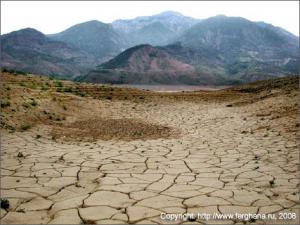Water securityWater problems in Asia’s future?
Economic and population growth on top of climate change could lead to serious water shortages across a broad swath of Asia by the year 2050. Having run a large number of simulations of future scenarios, the researchers find that the median amounts of projected growth and climate change in the next thirty-five years in Asia would lead to about one billion more people becoming “water-stressed” compared to today.

The future of the Asian water supply according to models // Source: brookings.edu
Economic and population growth on top of climate change could lead to serious water shortages across a broad swath of Asia by the year 2050, a newly published study by MIT scientists has found.
The study deploys detailed modeling to produce what the researchers believe is a full range of scenarios involving water availability and use in the future. In the paper, the scientists conclude there is a “high risk of severe water stress” in much of an area that is home to roughly half the world’s population.
Having run a large number of simulations of future scenarios, the researchers find that the median amounts of projected growth and climate change in the next thirty-five years in Asia would lead to about one billion more people becoming “water-stressed” compared to today.
And while climate change is expected to have serious effects on the water supply in many parts of the world, the study underscores the extent to which industrial expansion and population growth may by themselves exacerbate water-access problems.
“It’s not just a climate change issue,” says Adam Schlosser, a senior research scientist and deputy director at MIT’s Joint Program on the Science and Policy of Global Change and a co-author of the study. “We simply cannot ignore that economic and population growth in society can have a very strong influence on our demand for resources and how we manage them. And climate, on top of that, can lead to substantial magnifications to those stresses.”
The paper, “Projections of Water Stress Based on an Ensemble of Socioeconomic Growth and Climate Change Scenarios: A Case Study in Asia,” was published in the journal PLOS One. The lead author is Charles Fant, a researcher at the Joint Program. The other co-authors are Schlosser; Xiang Gao and Kenneth Strzepek, who are also researchers at the Joint Program; and John Reilly, a co-director of the Joint Program who is a senior lecturer at the MIT Sloan School of Management.
Teasing out human and environmental factors
To conduct the study, the scientists built upon an existing model developed previously at MIT, the Integrated Global Systems Model (IGSM), which contains probabilistic projections of population growth, economic expansion, climate, and carbon emissions from human activity. They then linked the IGSM model to detailed models of water use for a large portion of Asia encompassing China, India, and many smaller nations.
